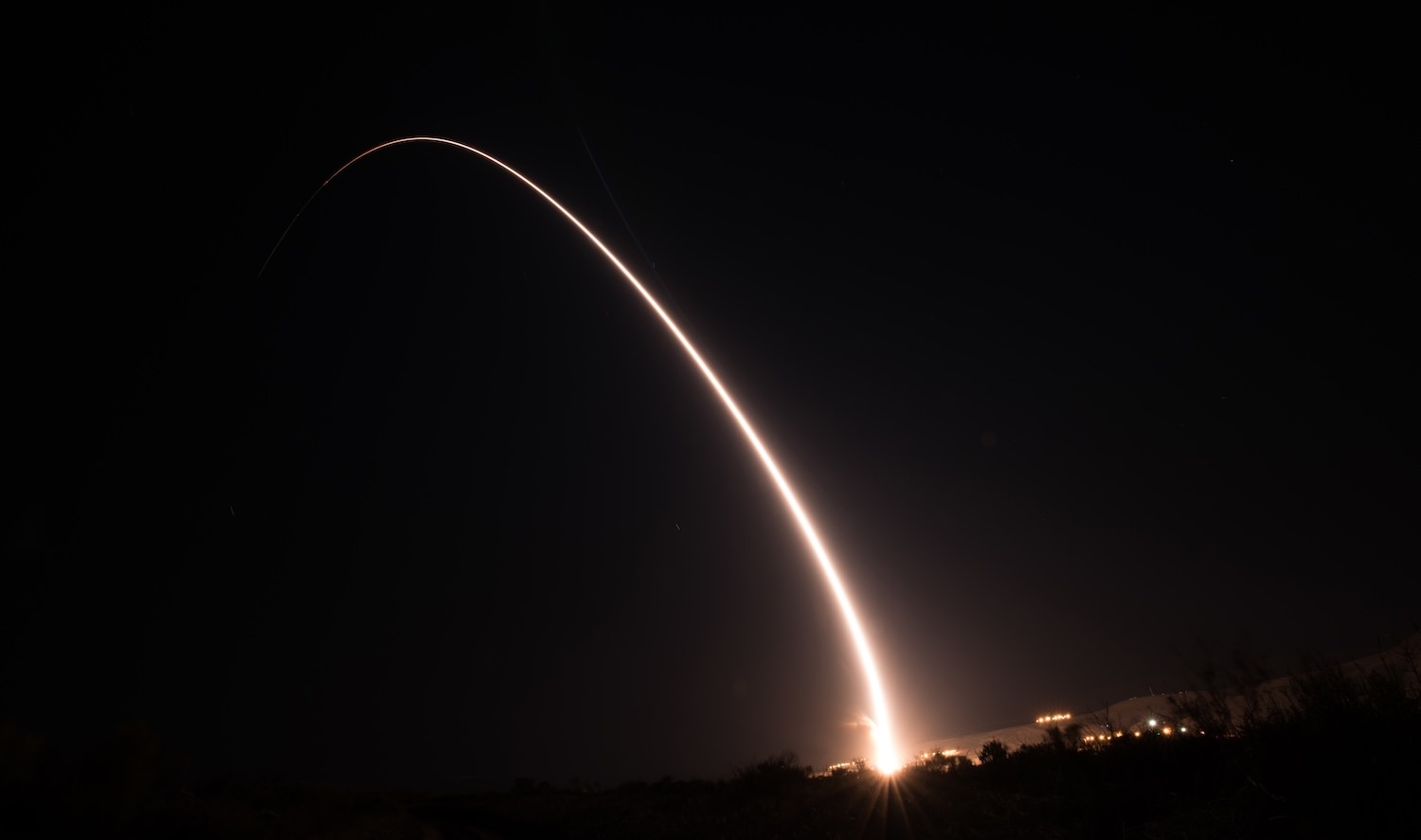The Air Force has recently acknowledged that the Minuteman III ICBM decommissioning will likely not terminate until 2050 and possibly beyond. This protracted delay is due to multiple cost-overruns and scheduling setbacks in the development of the Sentinel ICBM program, the updated nuclear missile system intended to replace the Minuteman. The Sentinel deployment is now projected to cost $140.9 billion (up 81% from its initial 2020 estimate) and has triggered a painstaking Congressionally-mandated review.
Maj. Gen. Stacy Jo Huser, commander of the 20th Air Force, stated on January 28 that the final Minuteman III decommissioning has now been put off until at least 2050. In her briefing charts, Gen. Huser cited the imperative to “ensure the MMIII [Minuteman III] can deter aggression and execute nuclear strike on order until 2052.”
This admission means that the US will rely on at least some of the 400 silo-based Minuteman III ICBMs for deterrence past the next six Presidential elections. Consequently, there exists critical breathing space for the US to negotiate strategic arms reduction agreements that would call a halt to the absurdly expensive and strategically outdated Sentinel program.
There is a precedent. The Peacekeeper (MX) ICBM, carrying at least 11 re-entry vehicles each, was touted by the Pentagon as essential to US nuclear deterrence strategy. Yet, as part of US-Soviet arms reduction agreements, the last Peacekeeper was deactivated in 2005.
Neither President Trump nor Russian President Vladimir Putin has advocated abrogating the 2011 New START Treaty that placed limits on strategic weapons systems, including the Minuteman. In fact, President Trump observed on January 23 that “tremendous amounts of money are being spent on nuclear, and the destructive capability is something that we don’t even want to talk about …. So, we want to see if we can denuclearize, and I think that’s very possible.”
President Trump rightly points to the destructive capability of nuclear weapons like Minuteman and the necessity to reduce US dependence on these apocalyptic systems whose hair-trigger Cold War rationale is no longer credible. The Pentagon has sufficient deterrence power in its submarines (with their submarine-launched ballistic missiles), strategic aerial bombers and tactical nuclear weapons to dissuade any adversary (read Russia or China) from launching an attack that would spell the destruction of their homeland. President Trump is also correct in pointing up the “tremendous amounts of money” being wasted on programs like Sentinel.
On May 21st, the Air Force successfully test-launched a Minuteman III carrying a Mark 21 reentry vehicle 4200 miles to a Pacific target. According to the AF official statement, the missile test “demonstrated that the US nuclear deterrent remains safe, secure, reliable, and effective in deterring 21st-century threats and reassuring our allies.”
The ICBMs are intentionally deployed in isolated bases in Montana, Wyoming, and North Dakota. Each pair of launch officers works 60 feet below the surface in hardened command capsules with control over 10 nearby ICBM silos. They operate on 24-hour shifts (often extended to 48 hours) and constantly monitor the readiness of their missiles. When ordered, they must agree to turn the launch keys and initiate nuclear Armageddon.
Minuteman launch crew members have highlighted their deteriorating work environment and disproportionate rates of cancer and other serious diseases, and have lobbied both the Air Force and Department of Veterans Affairs to provide full benefits to those service members affected (see Rudney, Washington Spectator, February 2025).
The launch crew survey found that diesel fuel leaked underground and was not properly contained, due to lack of spill monitoring and water testing. Polychlorinated biphenyls (PCBs) were leaking from building materials and not properly contained or removed. Furthermore, asbestos was not removed from inside the command capsules and also likely leached into the drinking water.
General Thomas A. Bussiere, Commander, Air Force Global Strike Command, has sponsored several virtual community town halls, but has yet to release any definitive conclusions from the official AF study. An independent study from the University of North Carolina found statistically significant rates of non-Hodgkin lymphoma in cases of missile crews in Malmstrom Air Force Base in Montana.
These developments have generated a serious morale problem among launch crew officers who perceive this assignment as a career dead end. One former launch officer remarked, “we practice for all-out nuclear war, but we know that isn’t going to happen.”
It is time for the Air Force and the Defense Department as a whole to recognize the folly of deploying an obscenely expensive and non-essential weapons system that reflects the outdated doctrines of a bygone era.
Dr. Robert Rudney is a retired senior adviser in the Department of the Air Force, where he received the Outstanding Civilian Service Award. He was also chief consultant to the ABA Task Force on the Nonproliferation of Weapons of Mass Destruction and a fellow in Senator Bernie Sanders’s office, working on defense issues. As a strategic analyst at the National Institute for Public Policy (1988-1999), he authored studies on the deterrence value of the multi-warhead MX Peacekeeper intercontinental ballistic missile and other nuclear weapons systems. His most recent nuclear arms reduction publications can be found at: https://washingtonspectator.org/author/robert-rudney/


